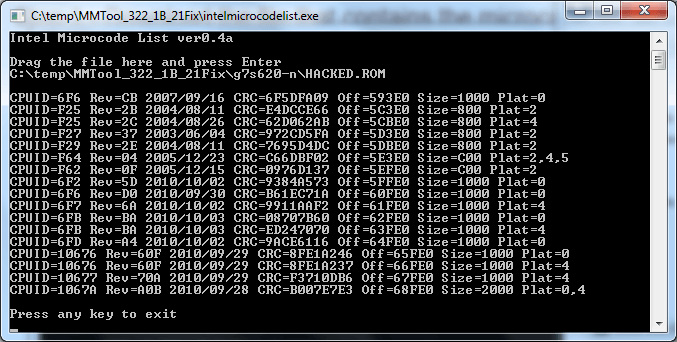First post, by PARUS
- Rank
- Oldbie
Hello to all!
I have unusual problem and I'd think maybe somebody knows something about it.
Motherboard: DFI G7S620-N, it's about socket-775, AGP8X, ISA. The official BIOS was released once. It hasn't any updates. This mb officially supports only NetBurst CPUs like Pentium 4 and Pentium D. But on our forum (Russia) one man did a great job - BIOS modification for Core 2 Duo and Pentium E CPUs. I can say that all CPUs got right detection including correct name, cache size etc and they are absolutely stable in Windows during many hours. But he could not solve one problem - all Conroe/Wolfdale CPUs work at only 100 MHz bus clock (FSB400). BSEL mod is not working on this mb. At the same time when I plug Pentium 4 or Pentium D the system detects FSB correctly, and I even can make BSEL mod to 133 (FSB533) or back to 200 (FSB800) MHz (BSEL0, BSEL1, BSEL2 contacts). But with Core CPU the bus frequency can't be higher than 100 MHz.
An author of this BIOS modification did his own test on other similar mb with this BIOS and Core CPUs. What do you think? Yes, nominal bus frequencies are available by BSEL mods. But on DFI aren't.
And: we did try to change bus clock during Windows sessions through programs-clockers without BIOS. When NetBurst CPU is plugged it doesn't cause problems, all is working 200->166->133->100->200. But when Core CPU is plugged any try to change bus frequency to other than 100 makes freezes.
I read Intel datasheets for Pentium 4 and for Core 2 Duo, they include signal tables. A signal tables for NetBurst and Core are much different. But I know and understand nothing in this.
Can somebody tell something about it? It is necessary to consult a person who knows hardware very well. Maybe someone knows such a man?
Thank you very much.

